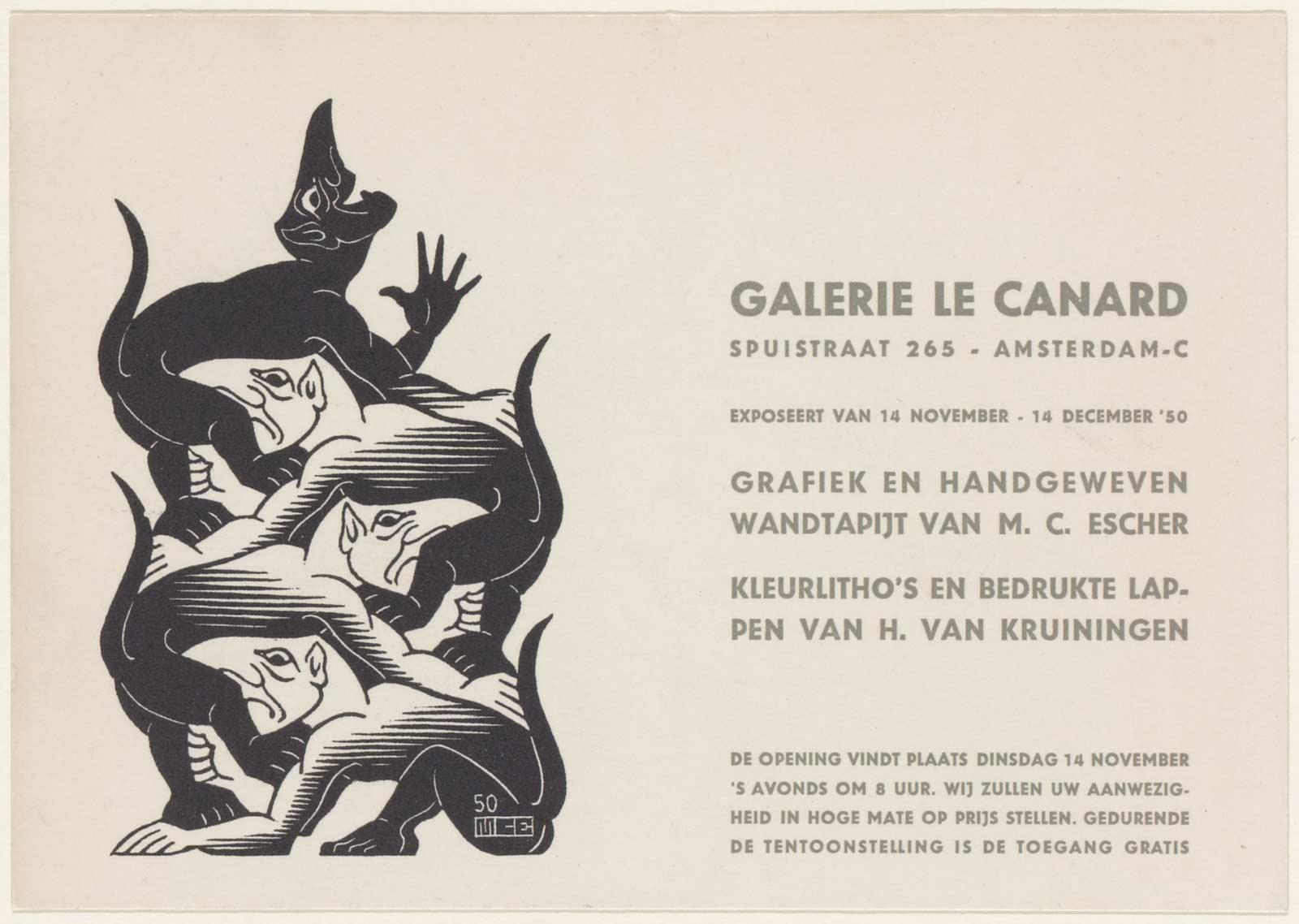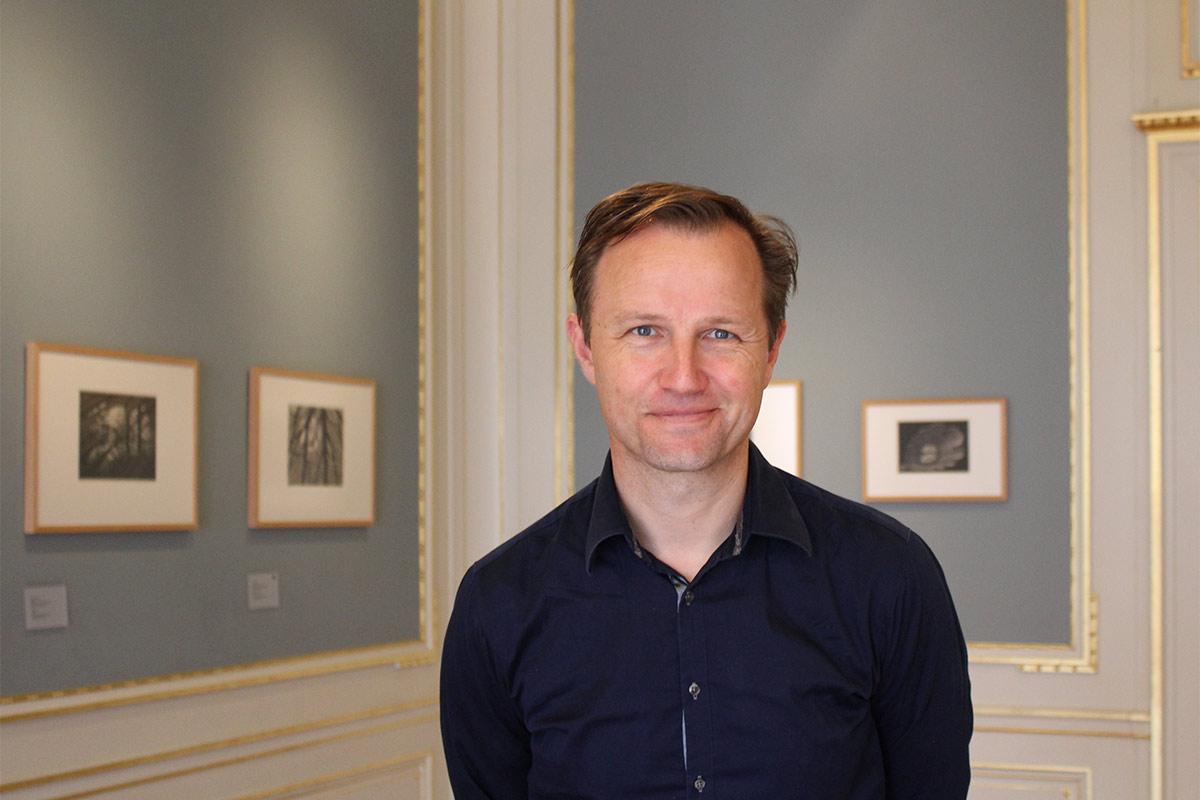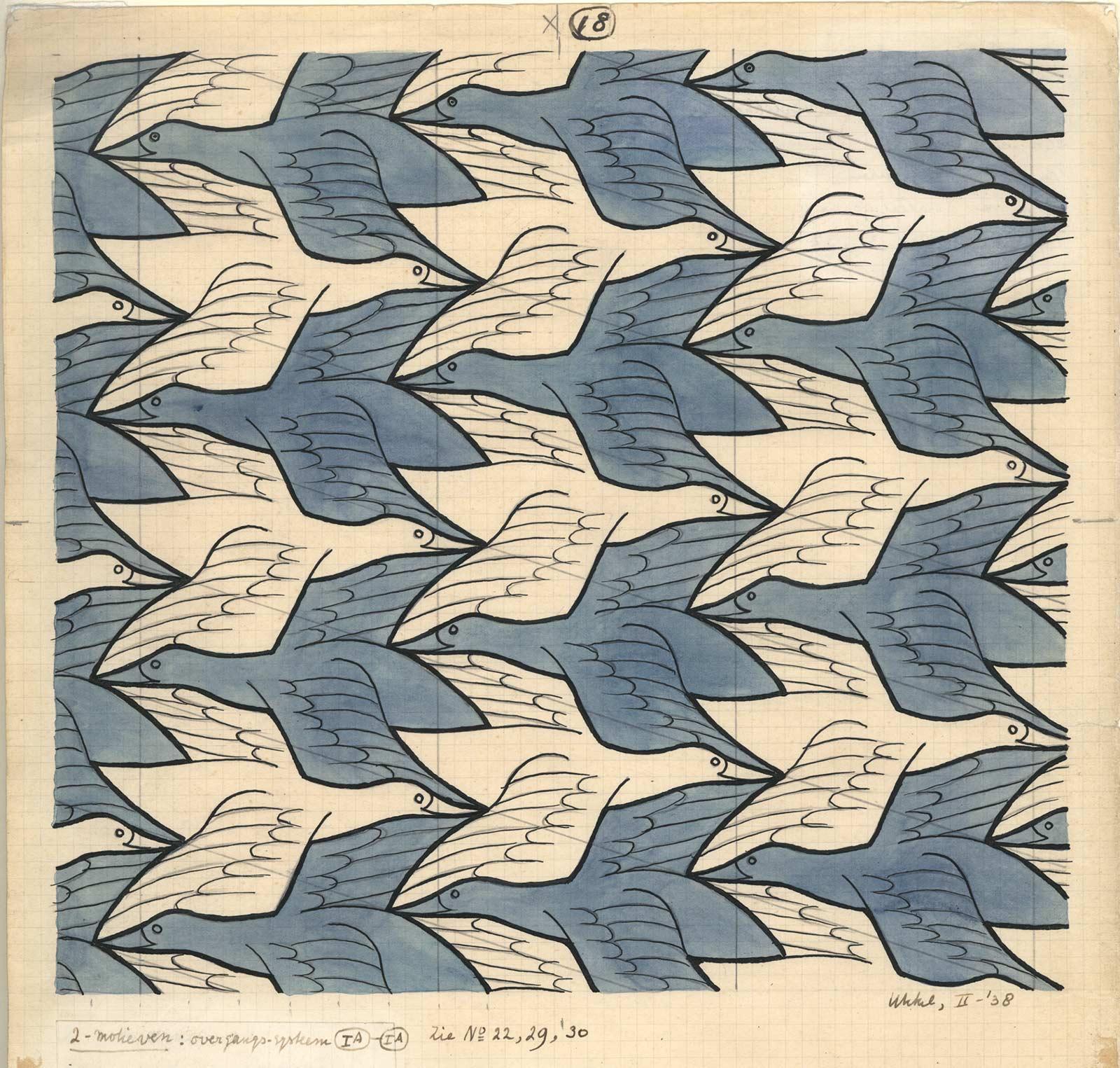
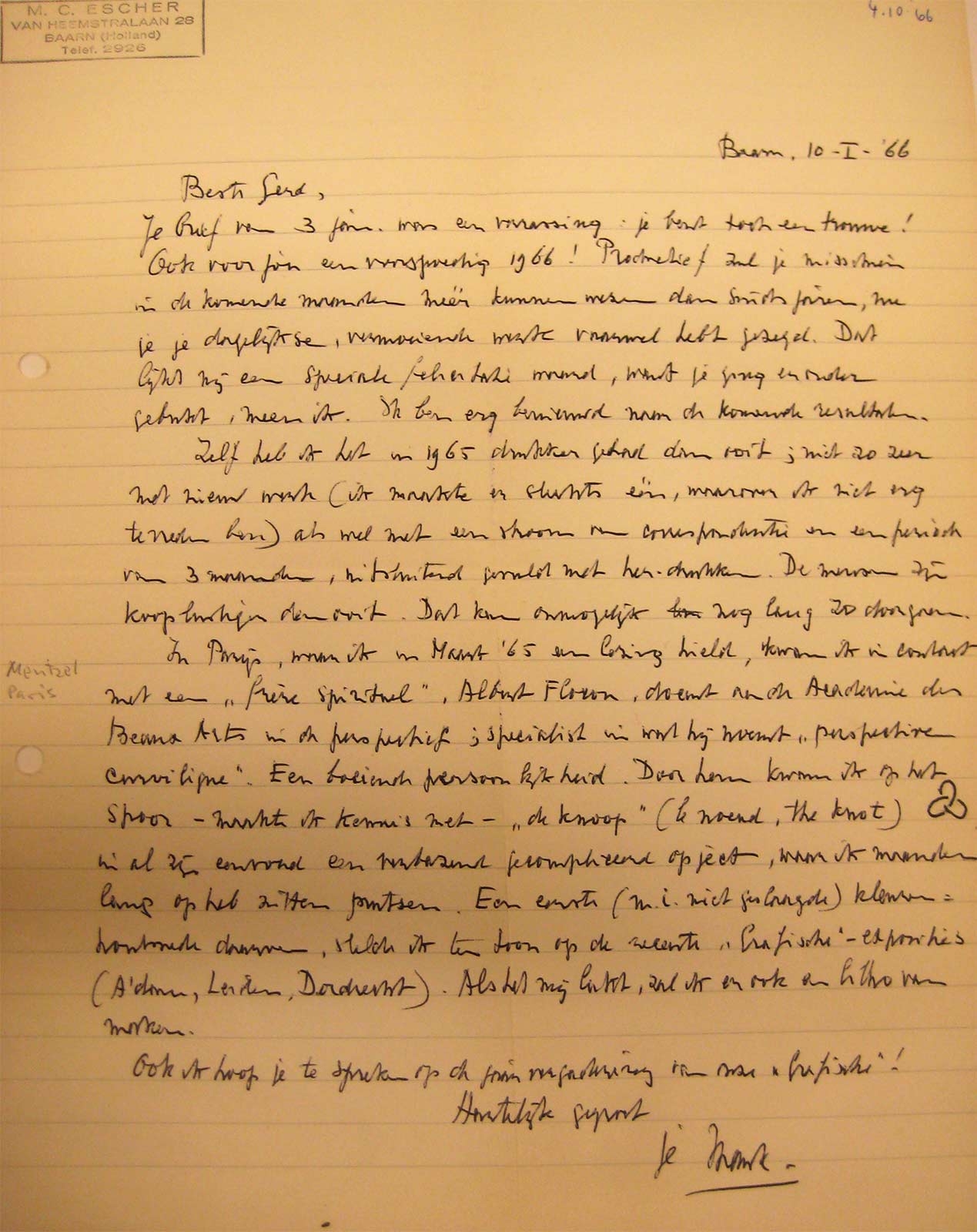
On 4 December 1988 the graphic designer Gerd Arntz passed away. He was one of Escher’s best friends. With his distinctive style as a graphic artist, Arntz was an outsider among his colleagues. Just as Escher was. Both ‘outsiders’ appreciated each other’s work. The two corresponded for years, trading experiences and ideas and commenting on each other’s work. They also met at their respective homes and Arntz continued to visit Escher in the ‘Rosa Spier Huis’ (retirement home for Dutch artists), where Escher died in 1972.
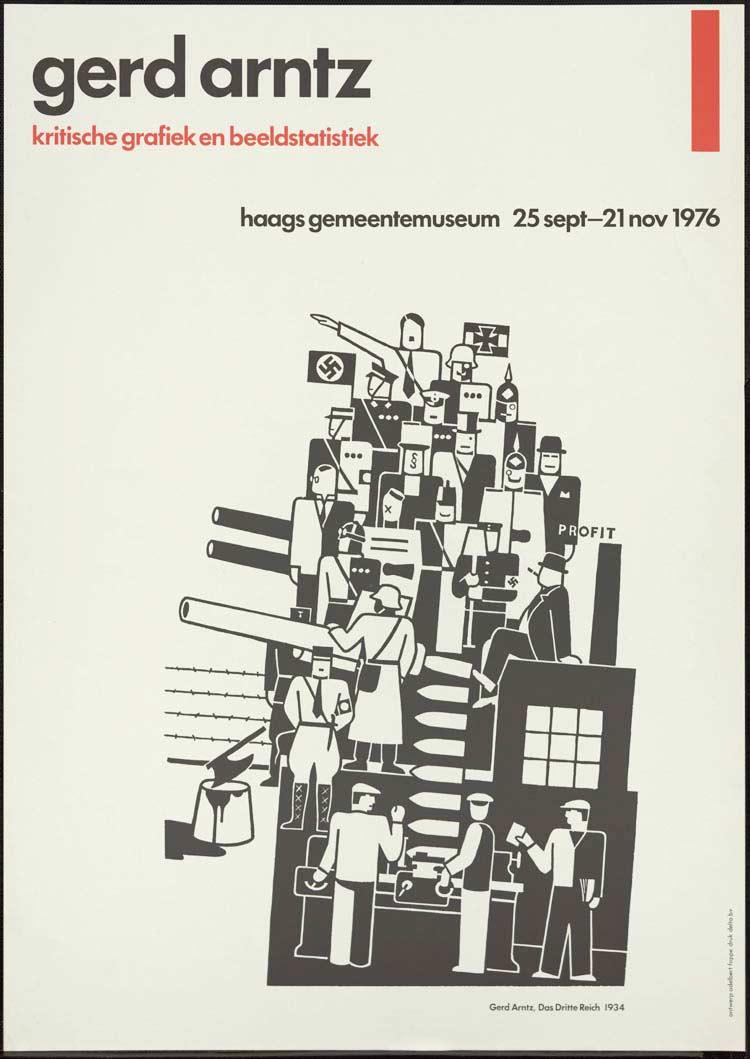
In his memoires Arntz wrote:
'Only with one artist did I get into a really friendly relationship, namely with M.C. Escher, whose work was undoubtedly on a very different level from mine and far surpassed it in skill and precision. But our being outsiders connected us beyond our mutual respect. He too had kept himself aloof from the revolutions in art, not intolerantly, but without being influenced by them. With an ironic smile he saw how his graphic became a world success in Europe and America.'*
Both friends exchanged prints too. To illustrate, Escher remarked in a letter to Arntz from 1 February 1954:
‘I am very pleased with your two prints. For years now, the simplicity of your technique and the power of your expression have struck me repeatedly in exhibitions. Daphne (1949) from an exhibition several years ago has lingered in my mind. I also consider In the Forest to be a very alluring piece. In return, I am sending you only one small print. However, it was one of the most laborious I have ever made. I thought that such a composition, with all its shades of grey, might form a nice contrast with your black and white. It is a copper print (mezzotint) involving no etching. I also consider it a typical example of my “specialty”.'***
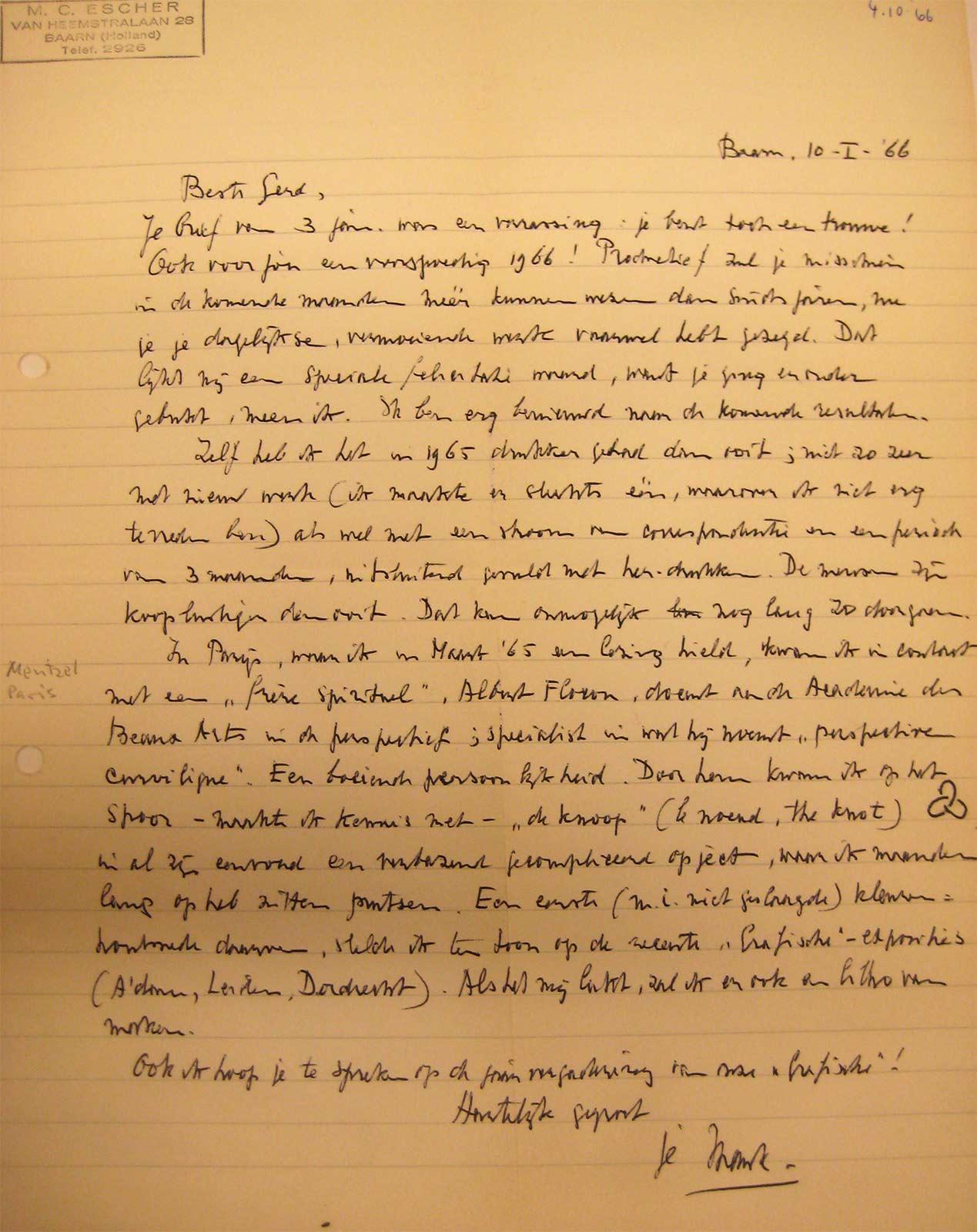
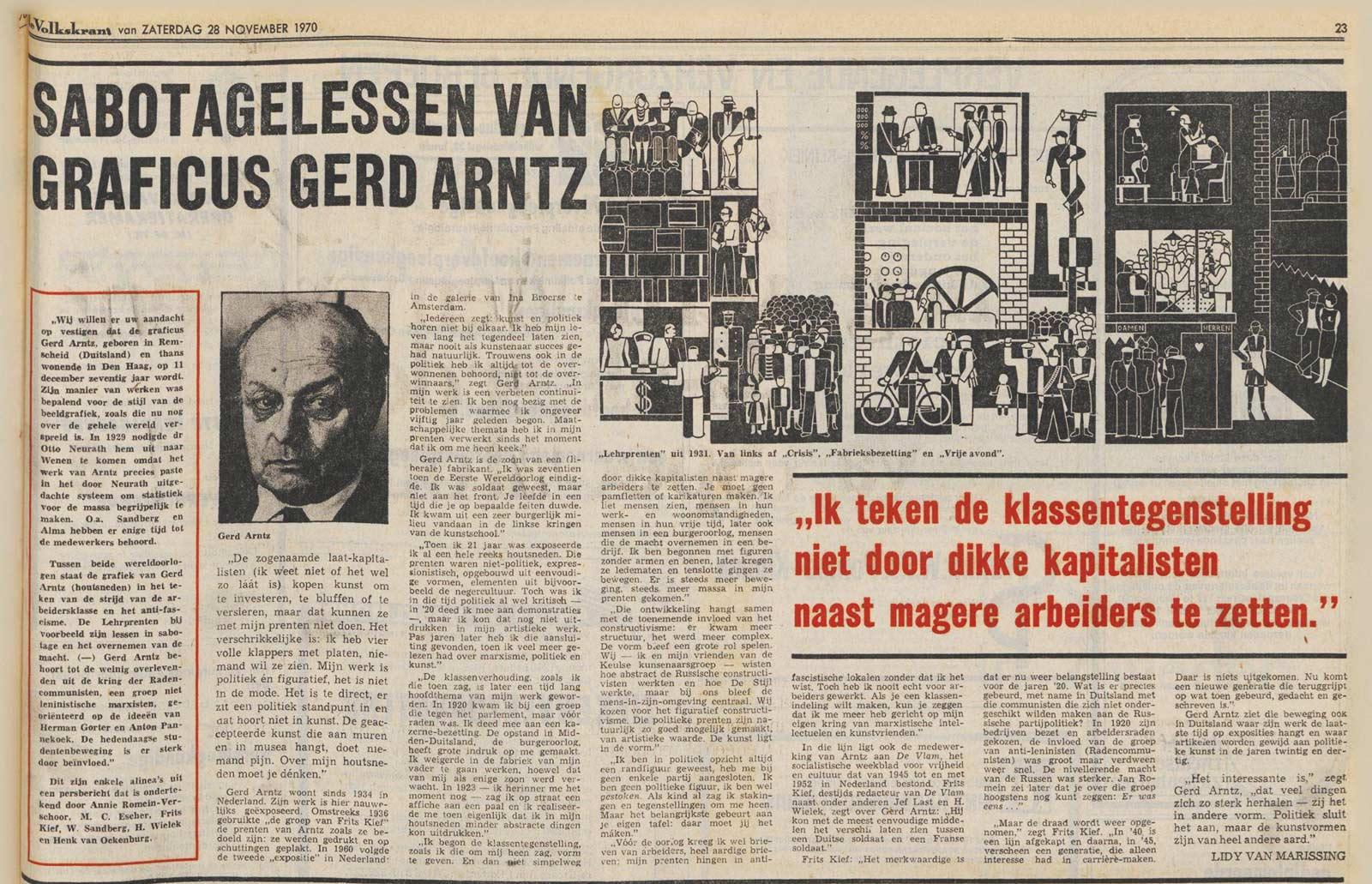
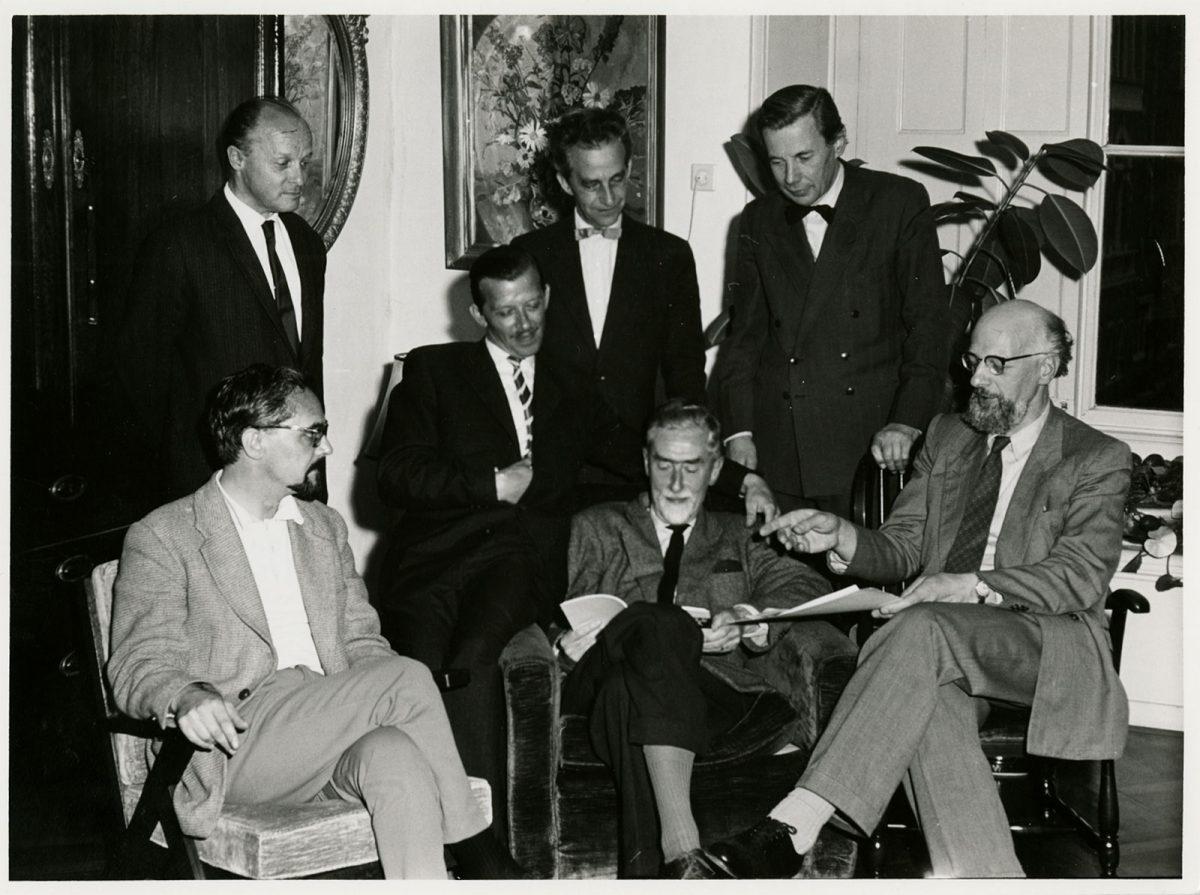
Another example of trading ideas and commenting, from a letter from Escher dated 2 January 1967:
'Dear Gerd,
Many thanks for sending your Swing (1966). It is a print that you first have to study for a while before seeing that it is the static representation of a dynamic action, so a single swing instead of two.
I thought it was the best print you ever made, to the best of my recollection, minimising resources whilst maximising expression.
It is a pity that it is such a hopeless case, the world in which we live. The symbol you have provided for it is far from cheerful or serene. The print has something creepily topical about it. It is an unpredictable, vicious, dangerous world. A senseless game of chance.
I prefer to reside in the realm of abstraction than have anything to do with reality.
Kind regards,
your Mauk’***
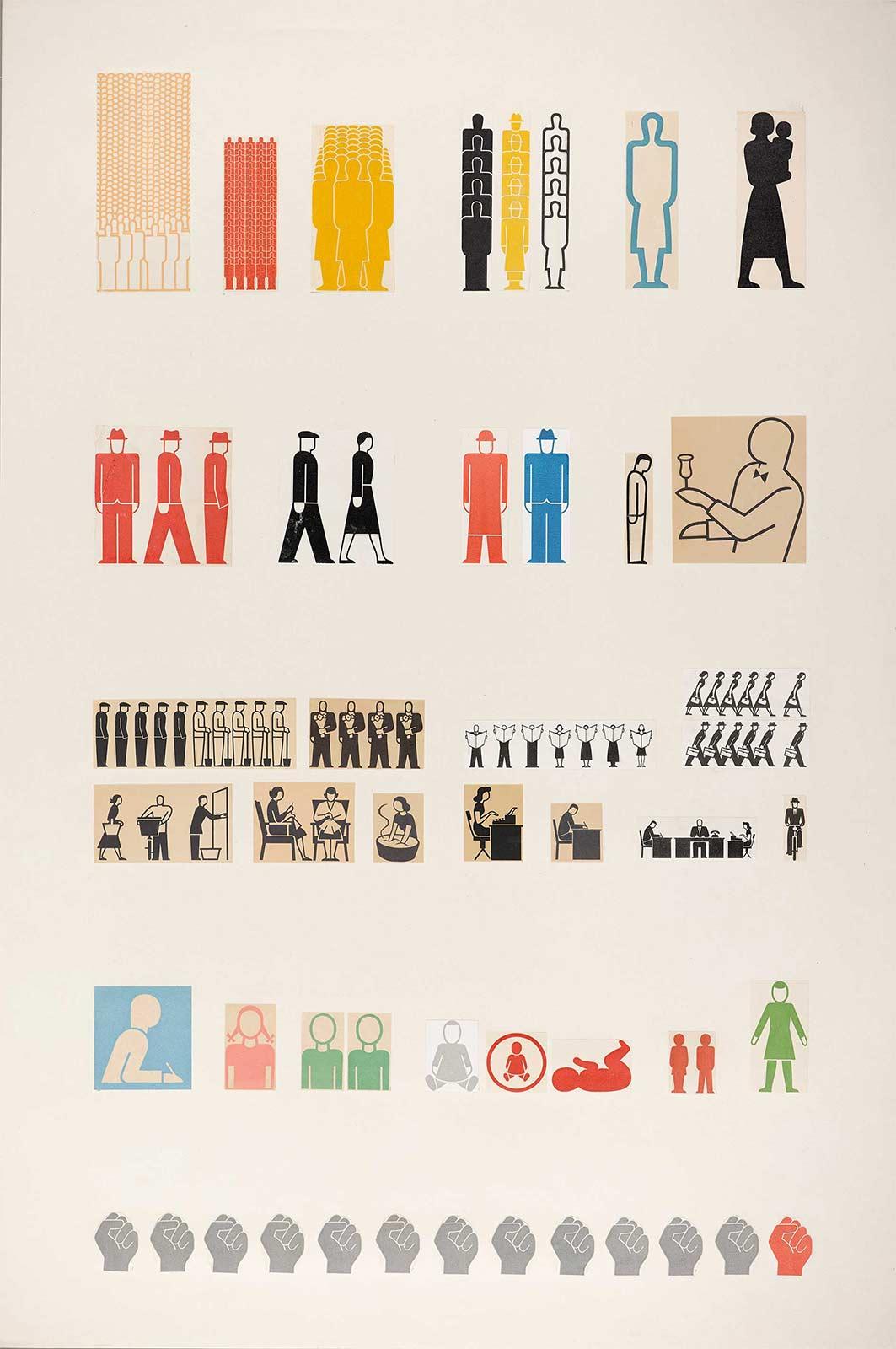
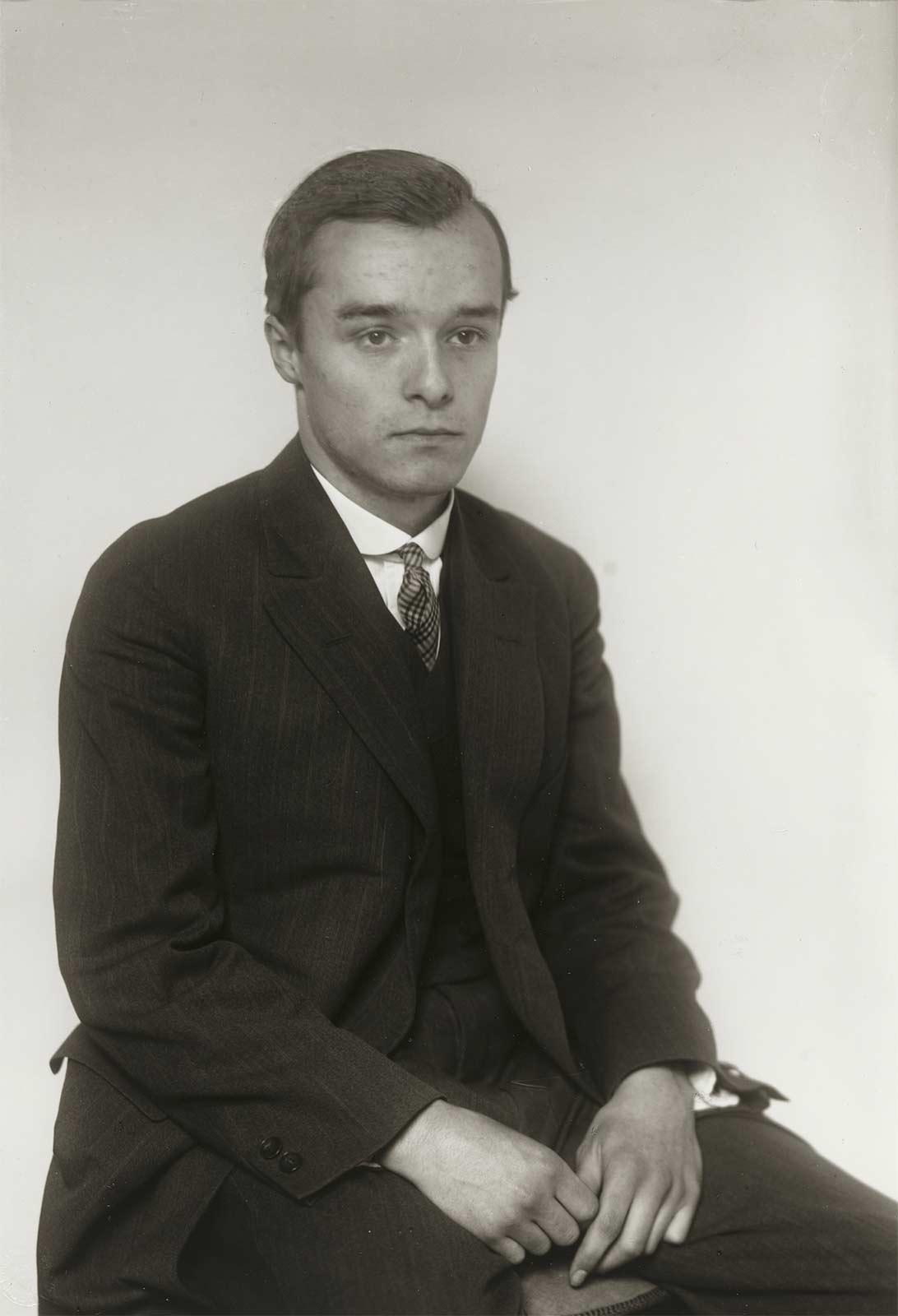
Gerd Arntz was born in Remscheid (Germany) in 1900 and grew up in a well-to-do, culture-loving family. In 1919 he entered art school in Düsseldorf and evolved into a highly committed political artist in the 1920s.**** Initially Arntz produced woodcuts in the expressionist style, but from 1924 onwards he simplified his work into symbols, reducing detail to a minimum. Through this imagery he was also seeking to portray social relations, thereby expressing his ideas about a collectively organised society. Following the seizure of power by Hitler, Arntz went to The Hague in 1934.***** His woodcut The Third Reich caused a political incident with Germany in 1936. Arntz showed his aversion to the Hitler regime in his own distinctive style, with the Führer standing at the top of a pyramid, followed below by the army and the party, the SS (Schutzstaffel) and the SA (Sturmabteilung), the capital, the justice system and the labour service. At the very bottom were the workers in the ammunition factory and all this in the midst of guns and the arms industry. The graphic was slightly skewed because Arntz expected the regime to collapse quickly. An enlarged version of the print was submitted to the exhibition ‘The Olympiad under Dictatorship’ in 1936, and removed from the exhibition after the intervention of the German envoy. In 1943 Arntz was called up for the German army. He was wounded, ended up in a field hospital and was a prisoner of war of the Americans until May 1946. After his return, he started working for the Dutch Foundation for Statistics (NSS) in The Hague.******
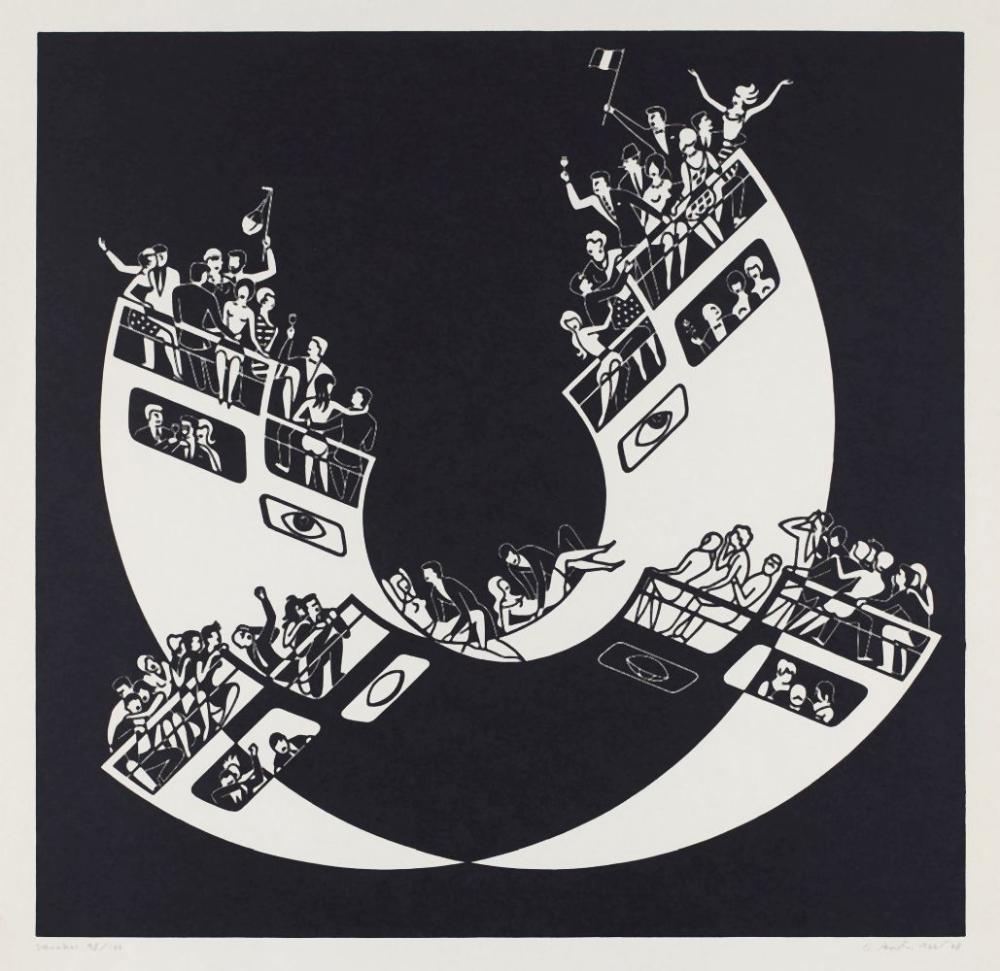
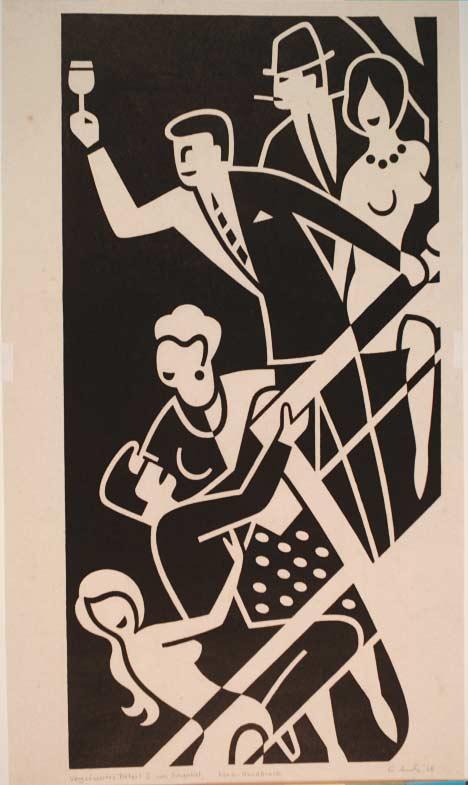
Arntz is world-famous for his isotypes. Together with the Viennese social scientist and philosopher Otto Neurath (1882-1945), Arntz developed the International System of Typographic Picture Education as a method for visual statistics. Arntz’s typical modus operandi was to work in a flat plane without the use of perspective and without intermediate shades or hatching. His woodcuts and later also his linocuts ‘only’ consisted of lines and planes, alternating between black and white. This distinctive style attracted the attention of Neurath in 1926. He asked Gerd Arntz to produce the icons and visual signs of Isotype. Both felt that the proletariat needed knowledge of the world around them to develop themselves. Not through opaque scientific language, but in clear imagery and a clear structure. The same went for people who were illiterate or semi-literate. Another stated goal was to overcome barriers of language and culture and to achieve universal understanding. Arntz ultimately designed around 4,000 of such signs, symbolising important data from industry, demography, politics, culture and economy on car ownership in the US and the rest of the world, trade flows, war victims or unemployment and strikes (where each figure represented 250,000 unemployed and every red fist 10 million working days lost). His symbols were both highly expressive and highly functional, as a unit of measure, presenting both content and trend at a glance.
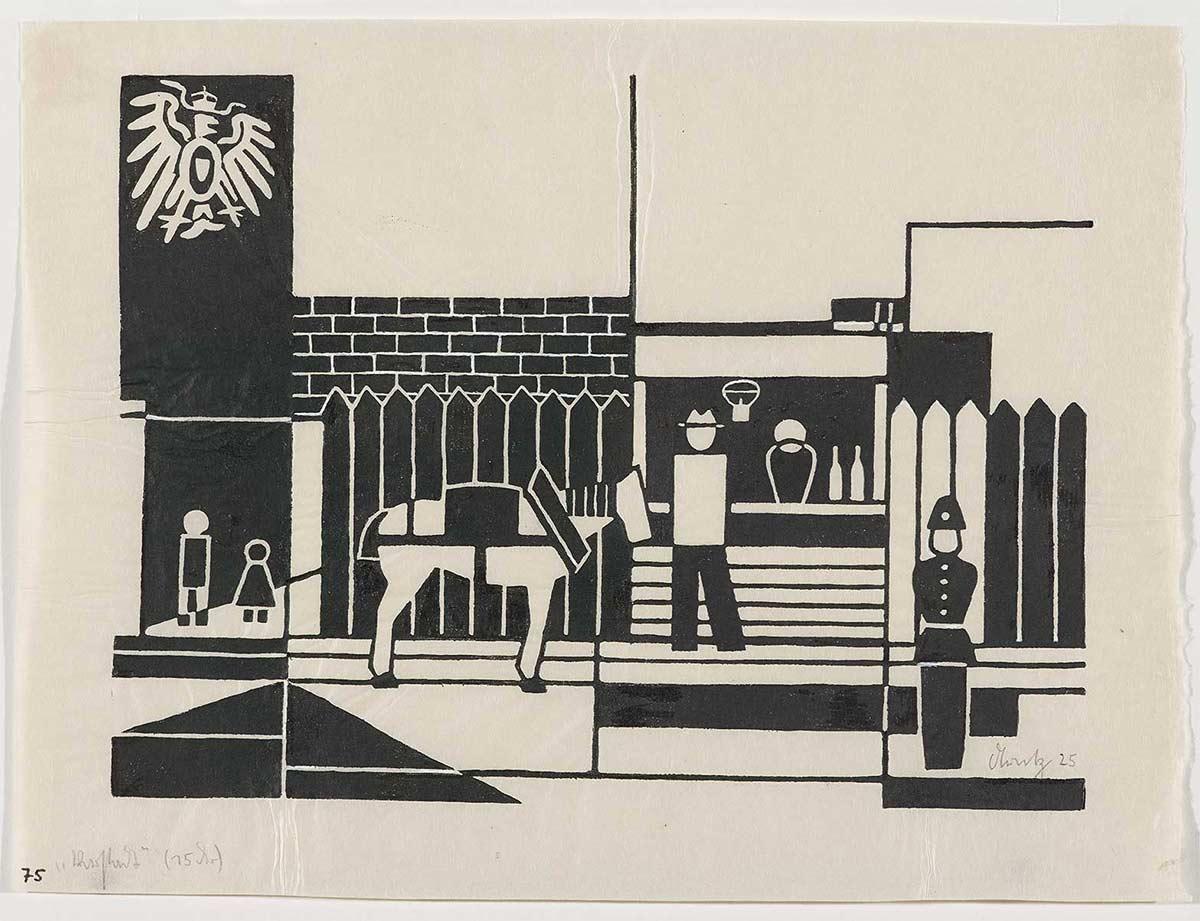

Arntz designed these isotypes and also cut them all out of linoleum. The system became an example of what we now call infographics and went on to be copied throughout the world. Neurath and Arntz are also the founding fathers of the Dutch field of visual statistics. Both emigrated to the Netherlands in 1934 and started their own foundation for image statistics on the Obrechtstraat in The Hague. Neurath fled to England in May 1940, where he founded the Isotype Foundation and continued to work until his death in 1945. Arntz stayed in The Hague, at the NSS, where for years he provided the illustrations for the Statistical Pocket Books. This Foundation, administratively connected with the Statistics Netherlands (CBS), issued publications on a whole host of social topics and for various clients. Arntz was able to continue his visual-statistical work there until his retirement in 1965. He also worked as a graphic artist, provided graphic work for socialist magazine De Vlam (The Flame) and spent several years illustrating classical literature. In the fifties he returned to social themes. A large exhibition of his work was held in the Gemeentemuseum in The Hague in 1976.


For those wanting to find out more about the work, there is a special website. The large archive of isotypes that has been stored at Statistics Netherlands since 1965 has been made available by designer Ed Annink via www.gerdarntz.org
Sources
[*], [**], [****], [*****] and [******] Wim Hazeu, M.C. Escher, Een biografie, Meulenhoff, 1998, pp. 357-358
[***] Wim Hazeu, M.C. Escher, Een biografie, Meulenhoff, 1998, p. 469
More Escher today

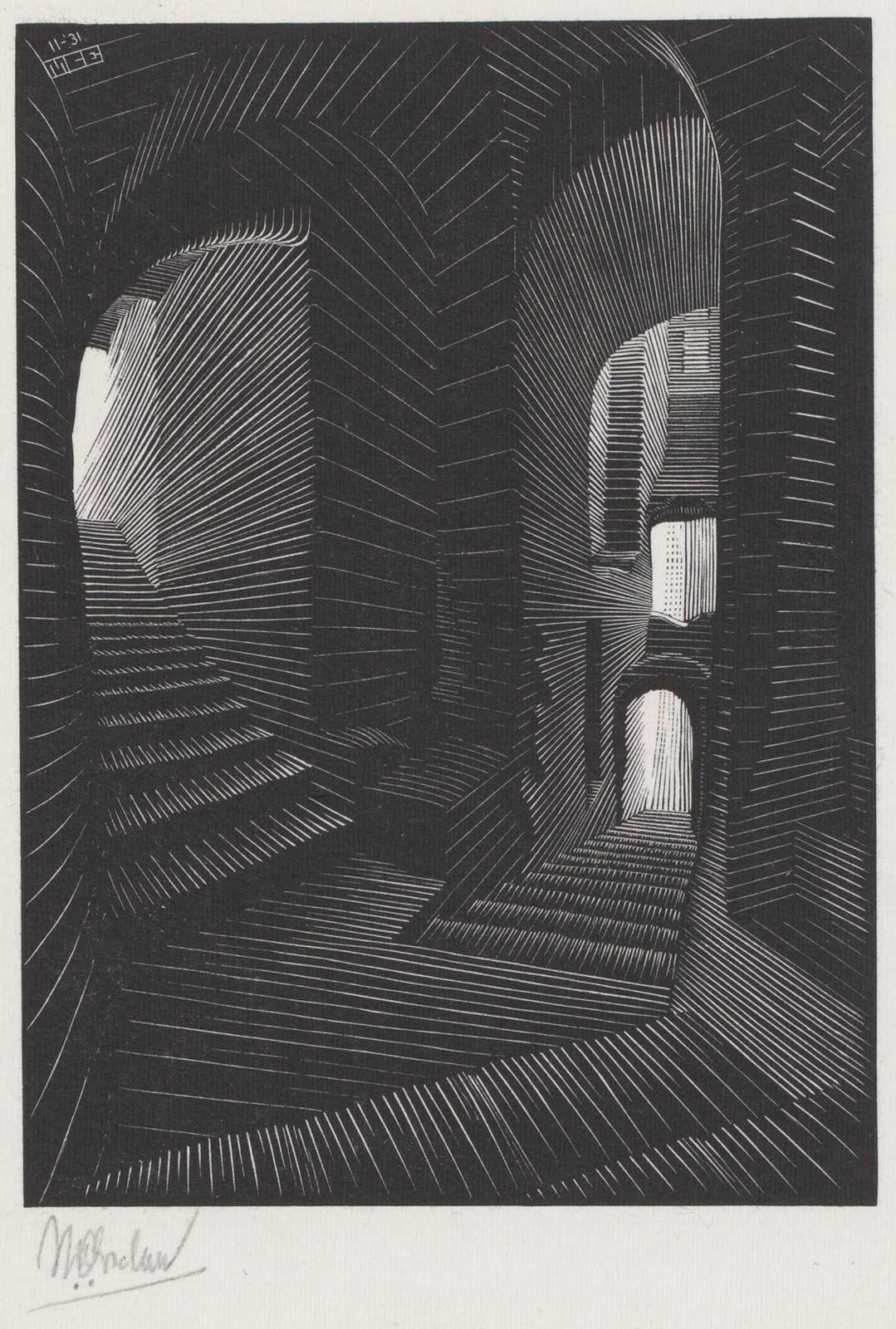
Covered alley in Atrani
